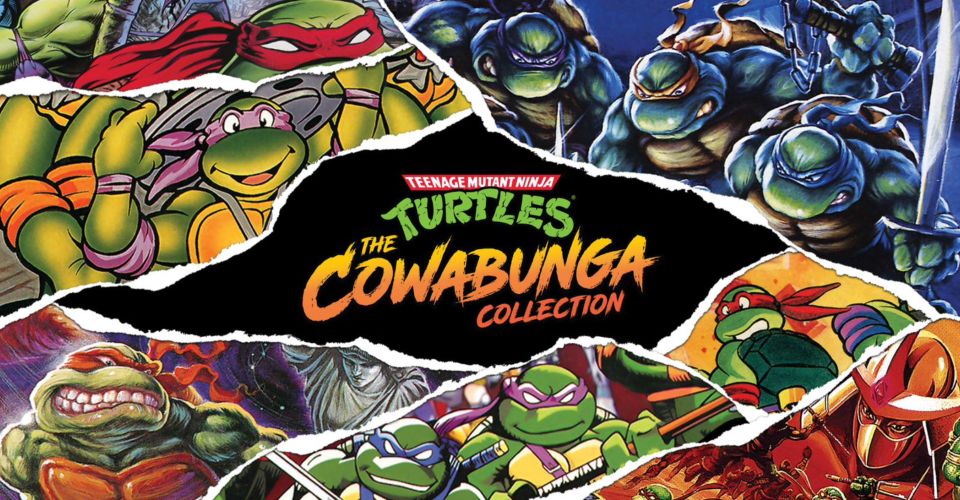Every TMNT Game In The Cowabunga Collection

Konami recently announced Teenage Mutant Ninja Turtles: The Cowabunga Collection, which is bringing 13 retro titles to PC, Nintendo Switch, PlayStation 4 and 5, and Xbox One and Series X/S in 2022. The bundle was part of the games revealed during PlayStation’s March 2022 State of Play. The Cowabunga Collection spans only five years of retro game releases from 1989 to 1994, despite having over a dozen titles included.
All 13 games come from arcade releases, the Nintendo Entertainment System, the Super Nintendo, the original Game Boy, or the Sega Genesis. Multiple games included are duplicates, being rereleases or ports from other platforms. For instance, there are three separate versions of Teenage Mutant Ninja Turtles: Tournament Fighters in The Cowabunga Collection. Despite the repeat titles and many of them being three decades old, Konami is selling The Cowabunga Collection for $40 both digitally and physically.
This collection will make a nice companion release for the new TMNT side-scrolling brawler, Shredder’s Revenge, which is also set to release in 2022, and is heavily inspired by the classic arcade and home console games developed by Konami. Shredder’s Revenge will just be the most recent in a long line of games starring Leonardo, Michelangelo, Donatello, and Raphael, many of which aren’t included in The Cowabunga Collection because they were developed by studios other than Konami. A bit about each of the 13 games included in Teenage Mutant Ninja Turtles: The Cowabunga Collection can be found below, organized by the order of their release.
Teenage Mutant Ninja Turtles (NES)

The first game ever made featuring the eponymous heroes was simply titled Teenage Mutant Ninja Turtles, and came to the Nintendo Entertainment System in 1989. Players were tasked with playing as all four Ninja Turtles in a quest to retrieve the Life Transformer Gun from their Nemesis, Shredder, so that it could be used to turn Master Splinter back into a human. Players navigated an over-world from a top-down perspective, avoiding and fighting enemies en route to side-scrolling levels, making it similar to Zelda II: The Adventure of Link, an outlier in the Legend of Zelda series.
Teenage Mutant Ninja Turtles (Arcade)

Also named Teenage Mutant Ninja Turtles, the franchise’s first arcade game released shortly after the NES title in 1989. It began the classic beat ’em up formula for TMNT games, and players chose one of the four Turtles to control, either via a selection menu in the two-player version, or by specific coin slots in the four-player cabinet. The team takes on Shredder and his Foot Clan minions, who have kidnapped Master Splinter and April O’Neil.
TMNT: Fall Of The Foot Clan (Game Boy)

Fall of the Foot Clan would be the first game in a trilogy that released on Nintendo’s Game Boy between 1990 and 1993. Players once again choose a single Ninja Turtle to control, but switch to the next once the first has lost all their health.
Five stages need to be completed before all four Turtles are defeated and captured by Shredder and Krang, who have taken April O’Neil prisoner. Health can be regained through eating slices of pizza or completing hidden mini-games.
TMNT II: The Arcade Game (NES)

The second game released for the NES was a port of the iconic Teenage Mutant Ninja Turtles arcade game, thus the subtitle. It released in 1990, a year after the original NES TMNT game, and made a few additions to its arcade predecessor. Additional levels were added and some existing ones extended, which brought new bosses to the game – Tora and Shogun.
TMNT: Turtles In Time (Arcade)

Turtles in Time was the second TMNT arcade cabinet, and was similarly built with two versions supporting maximums of two or four players. The game’s opening cutscene shows Krang and Shredder stealing the Statue of Liberty on live TV, and Leonardo, Michelangelo, Donatello, and Raphael jump into action to stop them. In the same beat ’em up gameplay, players first play through a New York City level before Shredder opens a time warp, with subsequent stages taking place in both the past and future.
TMNT II: Back From The Sewers (Game Boy)

The franchise’s second title for Nintendo’s retro, pocket-sized handheld, the Game Boy, released in 1991, and was very similar to its predecessor. Just like in Fall of the Foot Clan, Back from the Sewers had the player take control of all the Ninja Turtles one at a time.
The plot is practically identical to the first TMNT Game Boy game, with Shredder and Krang kidnapping April as part of their world domination plot. The levels were slightly larger than those in its predecessor, though, giving the player more room to maneuver.
TMNT III: The Manhattan Project (NES)

The Manhattan Project is a sequel to the NES port of the original arcade game, and plays very similarly. Up to two players choose from the roster of characters, and proceed through a series of stages as they attempt to stop Shredder, who has turned Manhattan, New York into a floating island (and has once again taken April hostage). Although its predecessor also used a code to access the options menu, TMNT III‘s is a variation of the legendary Konami Code, created by Kazuhisa Hashimoto, who passed away a couple years ago.
TMNT IV: Turtles In Time (SNES)

The Turtles in Time arcade game was ported to the Super Nintendo in 1992 and numbered as Teenage Mutant Ninja Turtles IV, intended to be a follow-up to The Manhattan Project on the NES. This home console port similarly had a variety of changes from the original arcade version, but the most notable was the use of the Super Nintendo’s Mode 7 graphics capabilities. Using Mode 7, some levels were altered to give the player a third-person perspective, rather than the typical side-scrolling view.
TMNT: The Hyperstone Heist (Genesis)

The Hyperstone Heist was the first of two TMNT games to release on Sega’s home console. Unfortunately, neither of them are a part of the list of classic Genesis games added to Nintendo Switch Online this past year. The Hyperstone Heist is incredibly similar to the SNES version of Turtles in Time, but is a much shorter game.
In control of the Hyperstone, Shredder shrinks Manhattan, and the player progresses through only five levels to stop him. The Hyperstone Heist was the first game Konami ever released on the Sega Genesis.
TMNT III: Radical Rescue (Game Boy)

The third and final game in the franchise released for the Game Boy, Radical Rescue, is quite a bit different than the TMNT beat ’em up games that came before. The story is still familiar, with Shredder kidnapping both Splinter and April, but the gameplay had several changes. Players were forced to start the game as Michelangelo since the other three Ninja Turtles were captured as well. The game progresses as more characters become playable, with each having different abilities required to access certain areas, giving Radical Rescue some gameplay elements from the Metroidvania genre.
TMNT: Tournament Fighters (NES, SNES, Genesis)

The final three games included in The Cowabunga Collection are the various iterations of Teenage Mutant Ninja Turtles: Tournament Fighters. Each contains a single-player story mode, as well as versus modes with multiplayer functionality, all of which have gameplay that takes the form of traditional fighting games. Each has a slightly different appearance, with differing casts of playable fighters. The SNES version has the most at 12, but the Genesis version sets itself apart by having a playable April O’Neil. Oddly, the NES version released in 1994, after the other two launched concurrently in 1993. Players will be able to see all the differences in Teenage Mutant Ninja Turtles: The Cowabunga Collection, since the bundle will include all three in their entirety.
About The Author

















